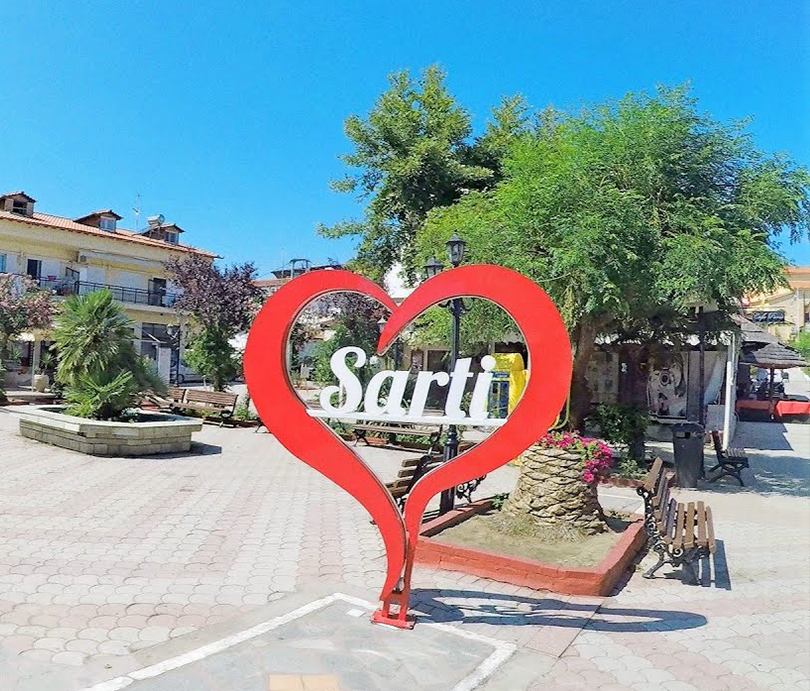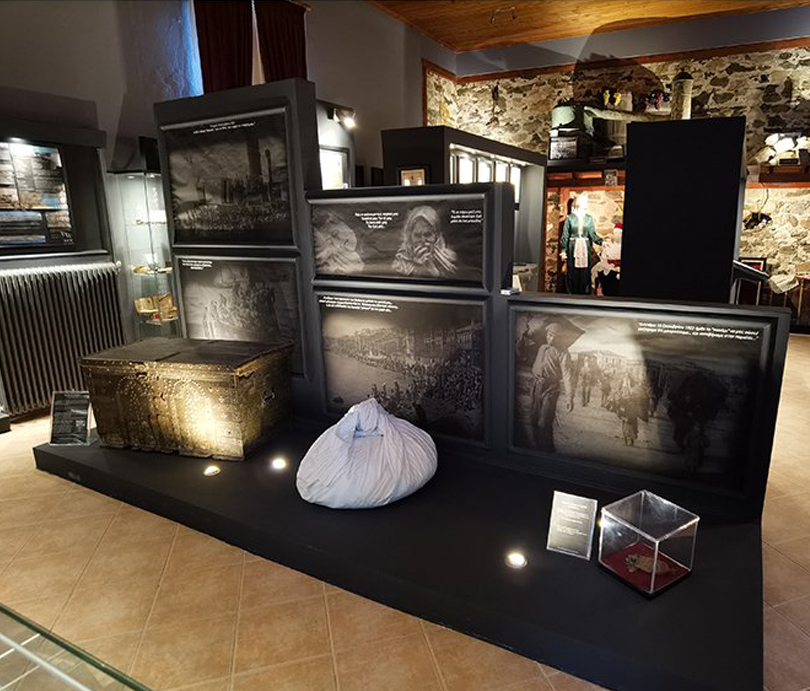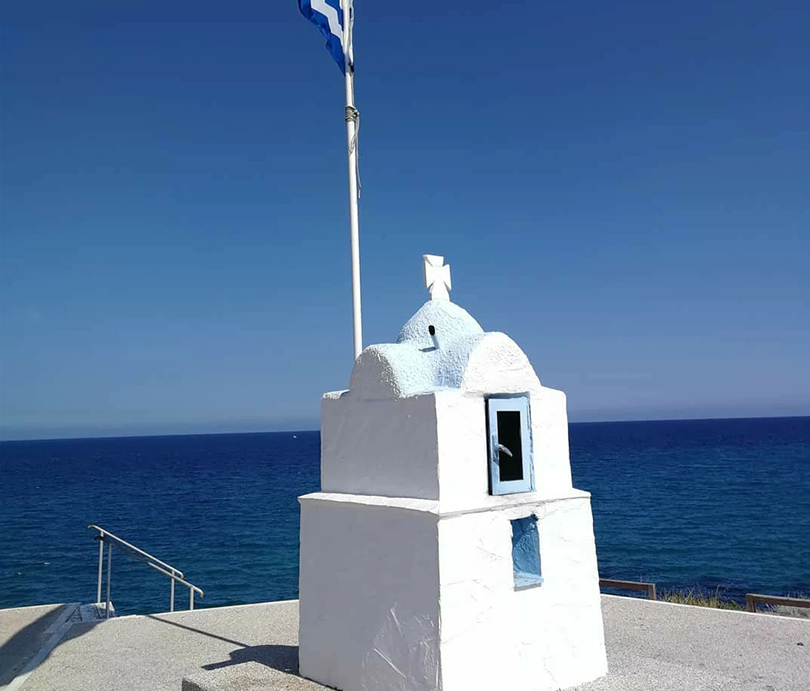

ΑΞΙΟΘΕΑΤΑ
Όταν πρόκειται για τοπικά αξιοθέατα, υπάρχουν πολλά που μπορείτε να επισκεφτείτε με την οικογένεια και τους φίλους σας κατά τη διάρκεια της παραμονής σας.
Ξεκινώντας από το χωριό της Σάρτης:
Το μεγάλο λογότυπο "Love Sarti" και η καρδιά της Σάρτης.
Είστε έτοιμοι να γεμίσετε το Instagram και το Facebook σας με φωτογραφίες σας και των αγαπημένων σας στο κέντρο της Σάρτης; Ο Σύνδεσμος Ξενοδόχων Σάρτης έχει δημιουργήσει το γλυπτό "Love Sarti" δίπλα στην παραλία, κοντά στον κεντρικό δρόμο της Σάρτης, το οποίο μπορεί να γίνει το τέλειο φωτογραφικό σημείο για εσάς και την οικογένειά σας ή τους φίλους σας για να τραβήξετε μια φωτογραφία και να κρατήσετε τη μνήμη της Σάρτης για πάντα ζωντανή.
Παράλληλα, στην κεντρική πλατεία της Σάρτης θα βρείτε ένα μικρότερο γλυπτό καρδιάς.
Είναι η καρδιά της Σάρτης και χτυπά μόνο για εσάς.
Απλά τραβήξτε μια φωτογραφία, ανεβάστε την στο Facebook και στο Instagram και μην ξεχάσετε να μας κάνετε tag.
Θα τη δούμε και, με την άδειά σας, θα τη μοιραστούμε.
Facebook: Σύνδεσμος Ξενοδόχων Σάρτης, Σιθωνία, Χαλκιδική
Instagram: @love_sarti


Ο Ιερός Ναός.
Ο ναός, που χτίστηκε από τους πρώτους κατοίκους της Σάρτης, τους Αφισιανούς, είναι αφιερωμένος στη Μητέρα των Χριστιανών, στην Ηγέτιδα, στη Χαρά των Δυστυχισμένων, στην Κυρία Μαρία! Χιλιάδες πιστοί έχουν γονατίσει στο προσκύνημά της όχι μόνο για να κάνουν αίτημα αλλά και για να τη ευχαριστήσουν.
Στην τελετή του Αγιασμού, που γίνεται μπροστά από την θαυματουργή εικόνα της, έρχονται πιστοί από τα πέρατα του κόσμου για να προσκυνήσουν και να λάβουν ευλογία στην εορτή της, που γίνεται κάθε χρόνο στις 15 Αυγούστου (το Πάσχα του καλοκαιριού).
Μην χάνετε λοιπόν χρόνο, ελάτε σε αυτόν τον ευλογημένο τόπο, ανεβείτε τα σκαλιά του ναού και νιώστε από μόνοι σας τη χαρά και την ειρήνη της ψυχής.


Λαογραφικό Μουσείο Σάρτης.
Το λαογραφικό μουσείο στεγάζεται στο κτίριο της παλιάς σχολής της Σάρτης, που δημιουργήθηκε από τους πρώτους κατοίκους και θεωρείται το παλαιότερο κτίριο της περιοχής.
Το μουσείο ιδρύθηκε το 2007 από τον Πολιτιστικό Σύλλογο Σάρτης ‘’Αφισία’’.
Εξερευνήστε αυτόν τον μοναδικό τόπο από το παρελθόν μέχρι το παρόν και μάθετε την ιστορία των ανθρώπων τους όπως το παρουσιάζει το μουσείο!


Ο Σταυρός.
Πίσω από το Λαογραφικό Μουσείο θα βρείτε τον Σταυρό, που στέκεται ακριβώς απέναντι από το επιβλητικό Όρος Άθως.
Βρίσκεται σε έναν καλά διαμορφωμένο φυσικό λόφο, θεωρείται μοναδικός τόπος για να βρείτε ηρεμία και να θαυμάσετε την εκπληκτική θέα με τον ήλιο να ανατέλλει πίσω από το θαυμάσιο Όρος Άθως.
Μπορείτε να τραβήξετε όμορφες φωτογραφίες και να προσθέσετε αυτόν τον τόπο στην περιήγησή σας στη Σάρτη.


Εκκλησάκι Αγίου Αντωνίου
Λίγα μέτρα από την παλιά σχολή και το μουσείο της Σάρτης βρίσκεται το μικρό εκκλησάκι, το εκκλησάκι του Αγίου Αντωνίου.
Βρίσκεται σε έναν λόφο, πάνω από απότομους γκρεμούς, προσφέροντας εκπληκτική θέα στην Αιγαίο και το Όρος Άθως, αλλά και πλήρη θέα στη Σάρτη.
Κάντε μια βόλτα εκεί για εντυπωσιακές φωτογραφίες.
Αφήστε τον εαυτό σας να μαγευτεί από την ατμόσφαιρα του τόπου.

